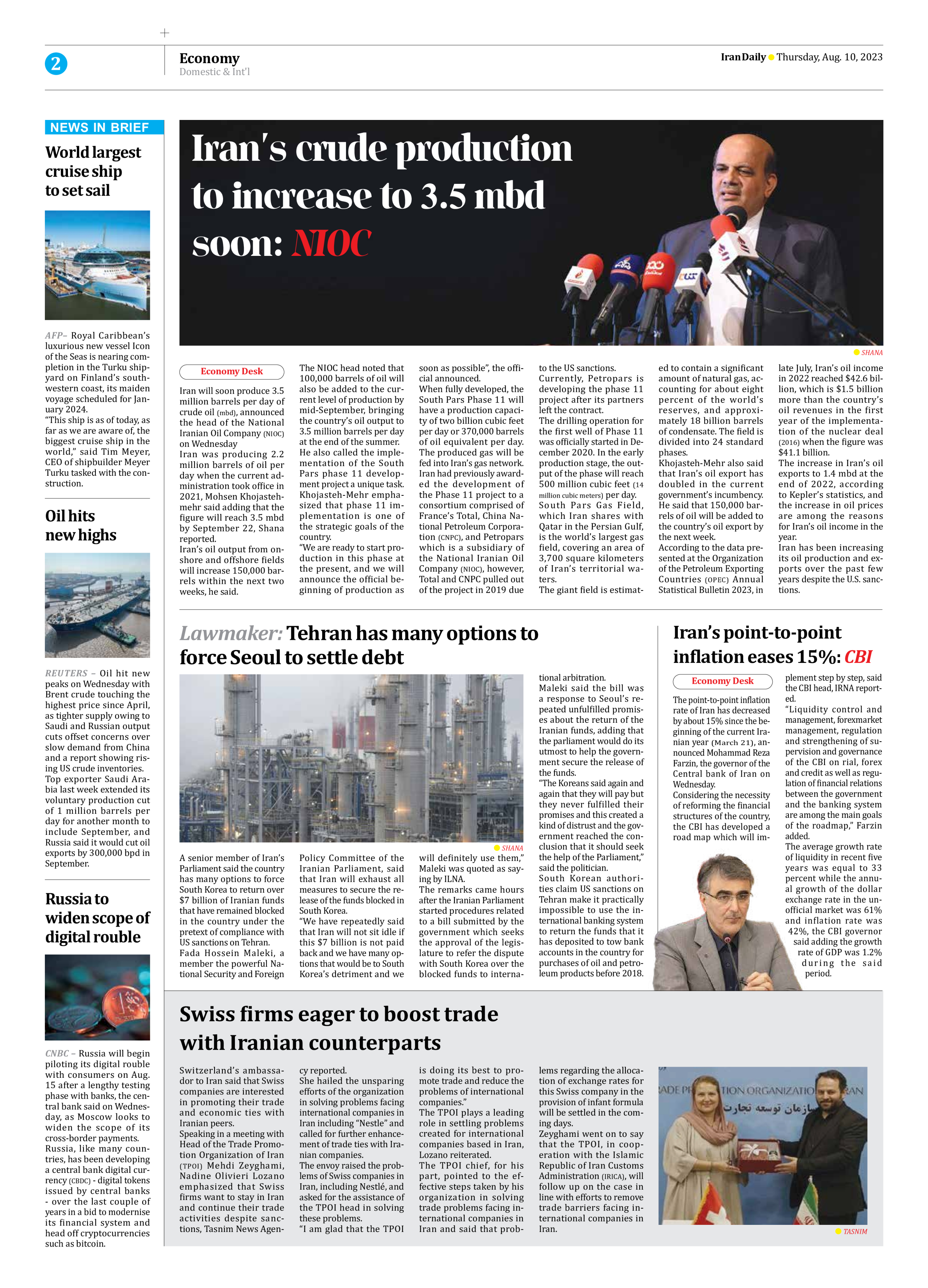
Iran’s crude production to increase to 3.5 mbd soon: NIOC
Iran will soon produce 3.5 million barrels per day of crude oil (mbd), announced the head of the National Iranian Oil Company (NIOC) on Wednesday
Iran was producing 2.2 million barrels of oil per day when the current administration took office in 2021, Mohsen Khojastehmehr said adding that the figure will reach 3.5 mbd by September 22, Shana reported.
Iran’s oil output from onshore and offshore fields will increase 150,000 barrels within the next two weeks, he said.
The NIOC head noted that 100,000 barrels of oil will also be added to the current level of production by mid-September, bringing the country’s oil output to 3.5 million barrels per day at the end of the summer.
He also called the implementation of the South Pars phase 11 development project a unique task.
Khojasteh-Mehr emphasized that phase 11 implementation is one of the strategic goals of the country.
“We are ready to start production in this phase at the present, and we will announce the official beginning of production as soon as possible”, the official announced.
When fully developed, the South Pars Phase 11 will have a production capacity of two billion cubic feet per day or 370,000 barrels of oil equivalent per day. The produced gas will be fed into Iran’s gas network.
Iran had previously awarded the development of the Phase 11 project to a consortium comprised of France’s Total, China National Petroleum Corporation (CNPC), and Petropars which is a subsidiary of the National Iranian Oil Company (NIOC), however, Total and CNPC pulled out of the project in 2019 due to the US sanctions.
Currently, Petropars is developing the phase 11 project after its partners left the contract.
The drilling operation for the first well of Phase 11 was officially started in December 2020. In the early production stage, the output of the phase will reach 500 million cubic feet (14 million cubic meters) per day.
South Pars Gas Field, which Iran shares with Qatar in the Persian Gulf, is the world’s largest gas field, covering an area of 3,700 square kilometers of Iran’s territorial waters.
The giant field is estimated to contain a significant amount of natural gas, accounting for about eight percent of the world’s reserves, and approximately 18 billion barrels of condensate. The field is divided into 24 standard phases.
Khojasteh-Mehr also said that Iran’s oil export has doubled in the current government’s incumbency.
He said that 150,000 barrels of oil will be added to the country’s oil export by the next week.
According to the data presented at the Organization of the Petroleum Exporting Countries (OPEC) Annual Statistical Bulletin 2023, in late July, Iran’s oil income in 2022 reached $42.6 billion, which is $1.5 billion more than the country’s oil revenues in the first year of the implementation of the nuclear deal (2016) when the figure was $41.1 billion.
The increase in Iran’s oil exports to 1.4 mbd at the end of 2022, according to Kepler’s statistics, and the increase in oil prices are among the reasons for Iran’s oil income in the year.
Iran has been increasing its oil production and exports over the past few years despite the U.S. sanctions.







